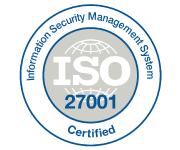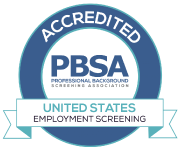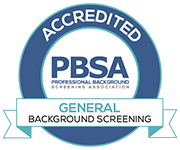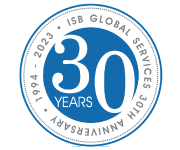See What's Trending In The Insurance Services Industry
Document Management Done Right: Best Practices for Insurers
 For Canada’s insurers, success depends on more than digitization — it requires efficient document sourcing practices powered by centralized platforms that streamline claims and underwriting, support compliance, and reduce fraud.
For Canada’s insurers, success depends on more than digitization — it requires efficient document sourcing practices powered by centralized platforms that streamline claims and underwriting, support compliance, and reduce fraud.
In P&C insurance, document sourcing is far more than paperwork — it’s the backbone of claims, underwriting and fraud prevention. Every decision hinges on having the right documents, fast and from a trusted source.
But today’s Canadian insurers are facing mounting pressure to get document management right.
Manual sourcing methods, disconnected vendors, and outdated systems are slowing down workflows and introducing costly errors and risk — just as short-staffed teams are grappling with record-breaking claim volumes, rising fraud and auto theft, and evolving regulatory demands.
“It’s no longer enough to Google around and try to get the right document — it has to be sourced fast, verified, audit-ready, and in the right hands at the right time,” says Christopher McClelland, Director of Insurance Solutions at ISB Global Services, a leading Canadian Insurtech.
As insurance companies modernize, centralized platforms like ISB’s that embed compliance, standardization, and automation into every document transaction, are becoming a strategic advantage, explains McClelland.
"Powered by advanced machine learning, AI and automation tech, ISB’s platform is purpose-built to remove the friction from document management where and when it matters most, freeing up insurance teams to do what they do best,” he adds.
With secure, centralized access to more than 70 essential insurance documents, ISB’s solution brings the speed, compliance, and scalability insurers need — helping underwriters write better risks, adjusters settle claims quicker and fairer, and enabling Special Investigations Units (SIUs) to combat fraud.
Why Document Management Needs a Rethink
Too often, document sourcing is treated as a back-office function. But as any claims adjuster or underwriter knows, its impact is front and centre.
Insurers are juggling increasingly complex workflows with limited time and resources.
“Manual steps, inconsistent protocols, managing consent form variations and a growing list of fragmented vendor relationships are just some of the many pain-points that make it hard to maintain accuracy or audit-readiness,” says Pamela Beauchamp, Director, Insurance Division at ISB.
“Such documentation inefficiencies aren’t just frustrating. In today’s fast-moving insurance environment, they’re risky,” she adds. “We often see insurers struggling with operational drag, reputational exposure and in some cases, even audit-failures because the document management just wasn’t up to the best standards.”
That’s why simply adopting tech isn’t enough, adds Laurence Carroll, Account Manager at ISB. “It takes the right foundation to truly modernize document management. That means combining the right tech with the right training, standard operating procedures, and continuous improvement.”
ISB’s platform eliminates guesswork, reduces redundancy, and embeds compliance and consistency into every document sourced. “Our solution gives insurance teams a clear, structured way to manage documents, while empowering them to focus on value-driven outcomes, not admin,” Carroll says.
 The High Cost of Inefficient Document Sourcing
The High Cost of Inefficient Document Sourcing
When document sourcing breaks down, it doesn’t just slow a claim. It ripples through the business — adding cost, risk, and frustration insurers can no longer afford.
“Missed or inaccurate documents can delay settlements, increase dispute and fraud risk, and damage customer trust,” Beauchamp explains.
One leading insurer working with ISB saw firsthand what streamlining could do — saving over 20,000 hours of adjuster time and more than $1 million in productivity by improving just a handful of document workflows.
How Centralized Platforms Solve Document Management Gaps
Centralized document systems are not only solving for speed and accuracy — they’re transforming the entire document lifecycle.
ISB’s platform gives users instant access to more than 70 essential document types, including fire and police reports, PPSA/lien searches, VIN histories, CARFAX National Lien reports and land titles.
Customizable document bundles ensure teams get exactly what they need, fast — with built-in validation to catch duplicate orders or missing fields.
AI-enhanced automation minimizes manual tracking and ensures every document request is consistent and compliant.
“We’ve built the tech to work for insurance teams, not the other way around,” says McClelland.
With ISB’s Ready for Guidewire Accelerator documents flow directly into ClaimCenter — no toggling between systems, no manual rekeying, and no chasing multiple vendors, adds Carroll.
“It’s about reducing the noise so insurers can focus on decision-making, not data-chasing,” she adds.
The result is real-time API delivery — often in under 15 minutes — and up to 40% less admin time per document order, enabling faster decisions, fewer errors, and stronger insurance outcomes.
 Outsmarting Fraud with Smarter Documents
Outsmarting Fraud with Smarter Documents
Claim fraud investigations spiked 76% in the past year, as inflated claims and auto theft continues to surge across Canada – all while provinces like Ontario move to centralize auto insurance fraud reporting.
“These pressures are raising the stakes for insurers to detect and defend against fraud more affectively,” says McClelland.
Centralized sourcing platforms give Special Investigations Units (SIUs) a critical advantage, streamlining access to original-source, unaltered documents that are verified, audit-ready, and legally defensible.
ISB’s system goes beyond sourcing to proactively flag anomalies and equip insurers with sophisticated investigative tools that help insurers uncover fraud fast, from falsified disability claims to organized auto theft rings, McClelland adds.
Among ISB’s most powerful fraud-fighting solutions:
- Simplified VIN-scan, developed in partnership with CARFAX Canada, instantly detects red flags like odometer rollbacks, fake or cloned VINs, undisclosed damage, and ownership inconsistencies.
- Social Media Screening, which combines digital forensics with expert human analysis to uncover discrepancies in claimant stories — turning public posts into court-ready evidence.
“You can’t fight today’s fraud with yesterday’s tools,” says McClelland. “When insurers have access to intelligent flags and verified documentation, they’re in a stronger position to stay one step ahead.”
Best Practices for Efficient Document Management
Transforming document management isn’t just about tech — it’s about embedding strong operational habits and best practices into every step of the sourcing process.
Here’s how leading insurers are building sourcing strategies that deliver speed, compliance and clarity.
- Standard Operating Procedures & Process Mapping
Create standardized documented workflows for requesting, validating, and storing documents. ISB uses detailed process mapping to reduce order errors and align requests with insurer policies and compliance protocols. - Training & Development
Equip teams with intuitive tools and onboarding support to move faster, with more precision. “Our intuitive platform training and self-serve tools ensure underwriting and claims teams can confidently access what they need, when they need it,” says Beauchamp. - Continuous Improvement & Feedback Loops
Review sourcing processes regularly based on user feedback and changing regulations. “We constantly update ISB’s platform in response to evolving protocols, like Quebec’s changing consent requirements, to help insurers stay agile and compliant,” Carroll notes. - Regular Audits & Assessments
Don’t wait for an audit to spot gaps. Build periodic checks into sourcing processes to catch risks early. ISB models this by embedding audit trails and internal compliance reviews into every request and tracking ongoing staff training. - A Strong Compliance Framework
Ensure clear, enforceable policies for how data is collected, used, stored, and disposed of. ISB’s platform meets the industry’s highest standards – including PIPEDA, payment data protection, and leading security frameworks. All data is hosted in ISB’s secure Canadian data centres with regular audits. Built-in controls like timestamped consent, real-time tracking, and region-specific sourcing rules help insurers stay audit-ready and compliant – even as regulations evolve. ISB also maintains a strong internal compliance culture with staff training, full data lifecycle controls, and proactive alignment with changing legislation, like Quebec’s new privacy laws.
 The Payoff: Stronger Workflows, Smarter Teams
The Payoff: Stronger Workflows, Smarter Teams
From underwriting to claims to fraud investigations, how documents are sourced and managed has a direct impact on outcomes — and insurers who get it right gain a powerful edge.
“Insurers that invest in centralized sourcing platforms with built-in standardization and automation aren’t just keeping up — they’re staying ahead,” says McClelland.
With centralized, secure access to over 70 document types, real-time API delivery, seamless Guidewire integration, embedded audit-readiness and intelligent flags, ISB provides the foundation insurers need to work smarter and faster.
As centralized platforms like ISB’s gain traction, they’re not just speeding up document access. They’re redefining what’s possible: lighter workloads, stronger compliance, sharper defensibility, and more resilient insurance operations.







While we are not affiliated with or employed by these organizations, we may reference our verified status in marketing materials, proposals, and client communications to demonstrate ISB’s commitment to compliance and security.